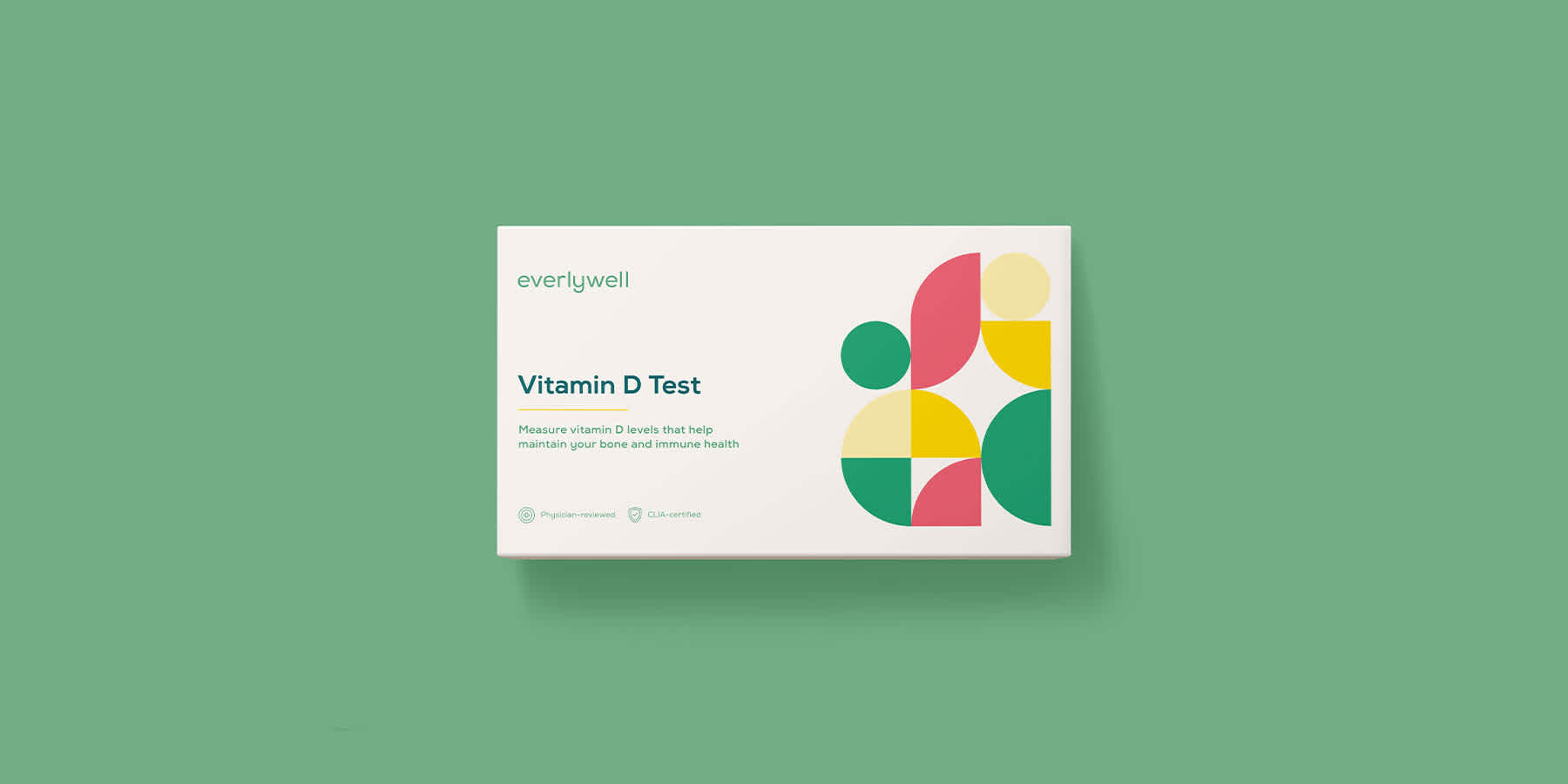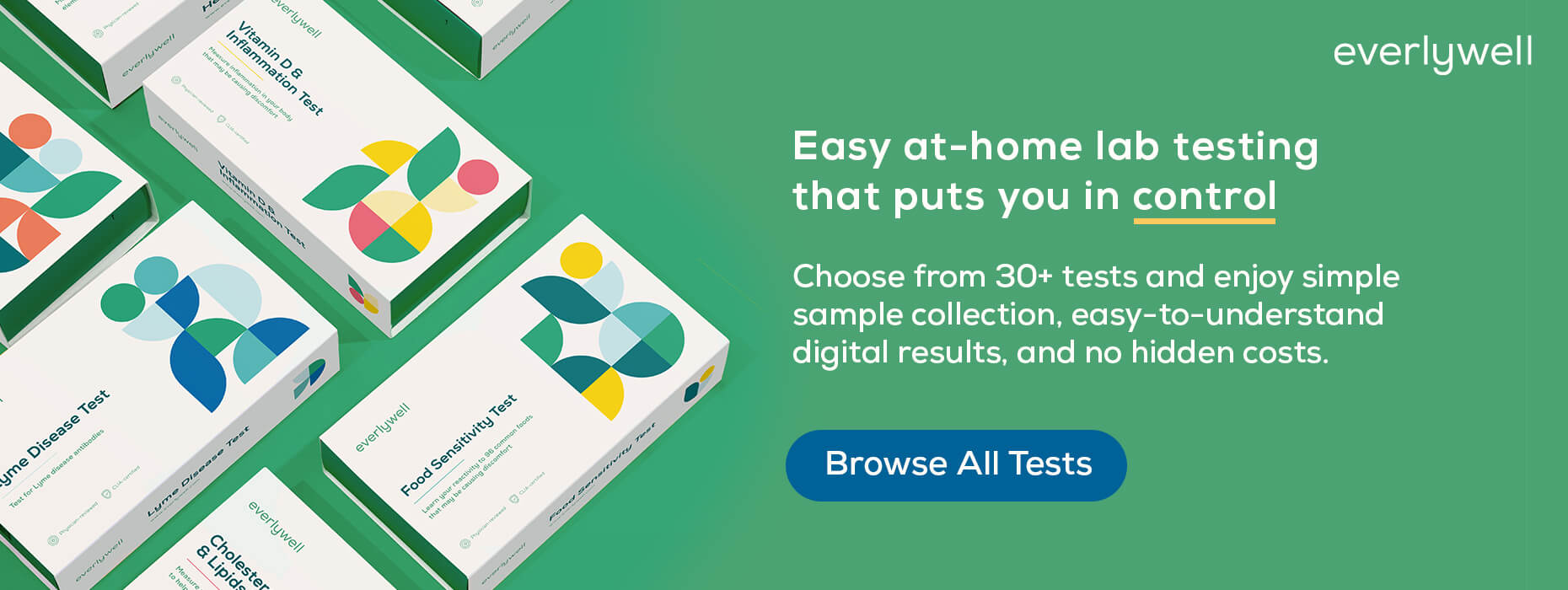
Vitamin D vs. D3: what's the difference?
Medically reviewed by Neka Miller, PhD on February 15, 2021. To give you technically accurate, evidence-based information, content published on the Everlywell blog is reviewed by credentialed professionals with expertise in medical and bioscience fields.
If you’ve been learning more about vitamin D or have been paying attention to the labeling on supplement bottles, you might have noticed that the term “vitamin D3” comes up. This might spring the following question to mind: vitamin D vs. D3—is there a difference and what even is D3?
Find the answer to that question in the article below, so read on for more.
Easily check in on your vitamin D levels from the comfort of home with the at-home Vitamin D Test.
What is vitamin D?
Vitamin D is a fat-soluble vitamin that is found in certain foods and supplements, but it can also be made by the body when your skin is exposed to the ultraviolet rays of sunlight. [1] It is actually the only vitamin of the 13 essential vitamins that your body can manufacture on its own. However, many people become deficient in vitamin D because they don’t get enough sunlight, and nearly 50% of people globally experience vitamin D insufficiency. [1, 2]
One of the main roles of vitamin D is promoting calcium absorption, which allows for proper bone mineralization and growth. It also plays diverse roles throughout the body, including reducing inflammation, supporting immune function, and metabolizing glucose. [1]
Check your vitamin D levels at home with the Everlywell Vitamin D Test
What’s the difference between vitamin D and vitamin D3?
There are two possible forms of vitamin D in the human body: vitamin D2 and vitamin D3. Both D2 and D3 are simply called “vitamin D,” so there’s no meaningful difference between vitamin D3 and just vitamin D.
That being said, it can be worth understanding how vitamin D2 and D3 specifically are different from each other—so here’s a quick rundown [2]:
-
Vitamin D3 is the form of vitamin D the human body makes when sunlight strikes the skin. The body can’t manufacture vitamin D2.
-
Vitamin D3 is found in animal sources of foods, like fatty fish and fish oil, liver, organ meats, and egg yolks.
-
Vitamin D2 primarily comes from plant sources (like wild mushrooms), and forms when certain kinds of plants are exposed to ultraviolet light from the sun.
Similarities between vitamin D2 and vitamin D3
While their chemical makeup and sources differ, vitamin D2 and vitamin D3 have much more in common. When ingested, both vitamin D2 and D3 have to pass through the liver and kidneys, where they get processed into the active, usable form of vitamin D. [2] Both forms of vitamin D are readily available as over-the-counter oral supplements. However, high doses of vitamin D2 (up to 50,000 IUs, or International Units) are only available through a prescription.
Which form of vitamin D is better?
Recent studies involving daily doses of vitamin D2 and vitamin D3 show that they are equally effective in boosting your vitamin D levels.
Thus, the type of vitamin D you get is less important than getting the right dose and making sure your levels are in the right range to avoid deficiency. Most experts recommend 600 to 800 IUs of vitamin D per day. [2] (The amount of vitamin D in foods and supplements is usually expressed in terms of International Units, or IUs.)
If you want to see what your vitamin D levels are like, take the Everlywell Vitamin D Test—an easy at-home option that lets you conveniently collect a sample at home and send it to a lab for accurate testing (a prepaid shipping label is included with the kit).
References
1. Vitamin D. NIH, Office of Dietary Supplements. URL. Accessed February 15, 2021.
2. Nair R, Maseeh A. Vitamin D: The "sunshine" vitamin. J Pharmacol Pharmacother. 2012;3(2):118-126.
